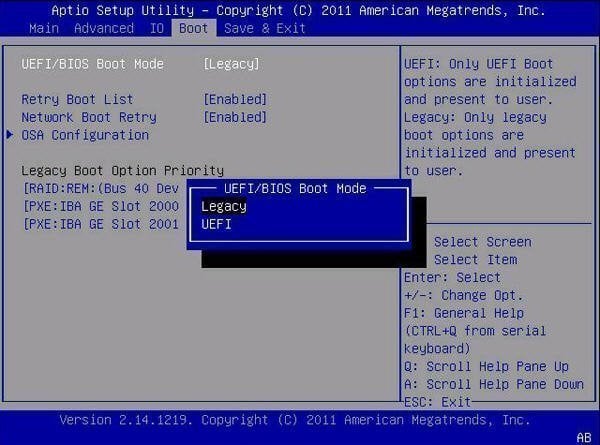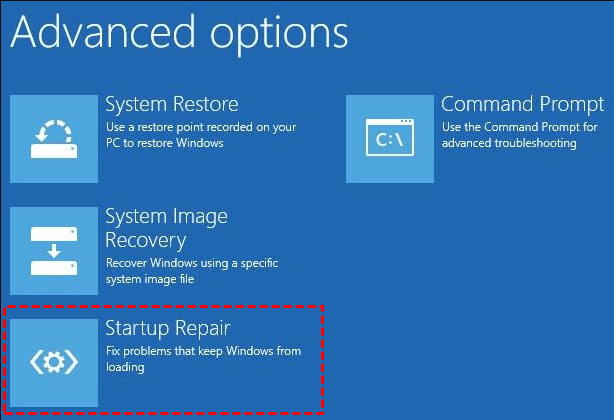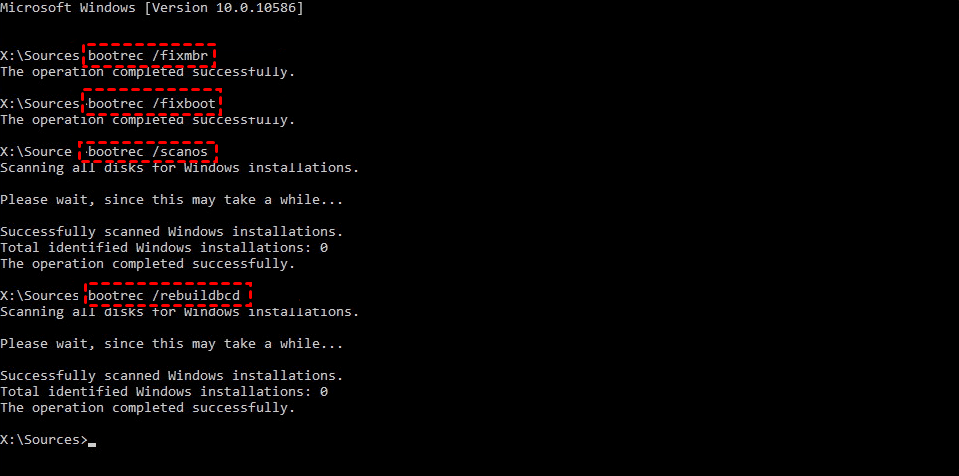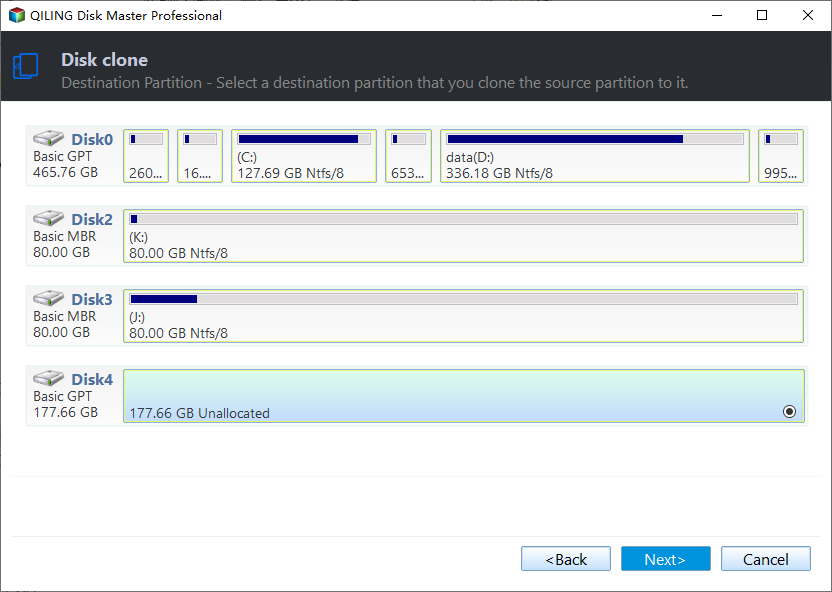Cloned SSD Won't Boot in Windows 11/10/8/7: Fix or Clone Again
Case: Cloned SSD not booting
Help. Upgrading my Windows 10 hard drive to a newly purchased SSD, both 1TB in size, but the SSD won't boot after cloning. Just black screen. Can anyone help me, or is there any trusted free cloning software?
Upgrading from a traditional hard disk drive (HDD) to a solid-state drive (SSD) can be a game-changer for Windows users. SSDs offer faster performance, smoother operation, and reduced noise. If you're considering making the switch, here's a step-by-step guide to help you upgrade from HDD to SSD in Windows.
Cloning a hard drive to a solid-state drive (SSD) can be a convenient way to upgrade your system, but sometimes, the cloned SSD may not boot properly in Windows. Here are some common reasons why your cloned SSD might not boot in Windows:
Windows may fail to start due to various reasons, including recent hardware or software changes. To troubleshoot the issue, follow these steps:
1. Insert your Windows installation disc and restart your computer.
2. Choose your language settings, and then, click "Next".
3. Click "Repair your computer".
If you do not have this disc, contact your system administrator or computer manufacturer for assistance.
File:\Boot\BCD
Status:oxc000000f
If you encounter an error message stating that the Boot Configuration Data (BCD) for your PC is missing or contains errors, don't worry. This issue can be resolved by following some troubleshooting steps. Here's a step-by-step guide to help you fix the problem:
Why cloned SSD won’t boot in Windows 11/10/8/7?
If you're experiencing issues with your Solid-State Drive (SSD) not booting after cloning, don't worry. This problem can be resolved by identifying and addressing the underlying causes. Here are some common reasons that might be causing the issue:
1. If the source disk you cloned has bad sectors, it may cause cloned Windows 10/11 SSD won't boot.
2. The system is corrupted during the cloning process, so the cloned drive won't boot.
3. Missed cloning the "system reserved" partition.
4. Set the wrong drive to boot from.
5. The drive letter may have changed while you change HDD to SSD. And this progress may cause boot files missing, which causes the cloned SSD won't boot.
6. GPT/MBR conflict causing the cloned drive won't boot in Windows 11/10/8/7.
How to resolve Windows fails to boot after cloning HDD to SSD
If your SSD cloned from a hard drive (HDD) won't boot in Windows, don't worry! Here are some solutions to help you resolve the issue:
If your SSD cloned from a hard drive (HDD) won't boot in Windows, you can try setting the BIOS to boot from UEFI or Legacy. Here's how:
If your SSD cloned from a hard drive (HDD) won't boot in Windows, you can try changing the boot order to boot from the cloned SSD. Here's how:
☛ Method 3. Repair Windows Startup from Windows RE
Want to clone your HDD to SSD without any booting issues? Here's a quick fix:
Method 1. Setting BIOS to boot from UEFI or Legacy
If you cloned the GPT HDD to MBR SSD, or cloned the MBR HDD to GPT SSD, it is necessary to change boot mode from UEFI to Legacy or from Legacy to UEFI. The wrong boot mode will cause the SSD not booting after clone.
To change the boot mode, you can refer to the following to configure it:
1. Continuously press a specific key (usually F2, F8, F12,Del) to enter BIOS Setup.
2. Then, use the arrow keys to select Boot tab. Here, you can select UEFI/BIOS Boot Mode as Legacy or UEFI.
3. Press F10 to save the settings and then exit. Then, restart your computer from the cloned SSD.
If your computer only supports Legacy boot mode, you can convert the GPT partition table to a Master Boot Record (MBR) partition table. This process involves modifying the partition table to make it compatible with Legacy boot mode.
Method 2. Change boot order to boot from the cloned SSD
When cloning a hard drive, it's possible that the cloned drive won't boot due to the wrong boot device being set. This issue can be resolved by setting the boot order manually, especially when there are multiple hard drives on your computer.
1. Enter BIOS Setup and go to the Boot tab.
2. When cloning a hard drive, it's possible that the cloned drive won't boot due to the wrong boot device being set. To resolve this issue, you can manually set the cloned SSD as the first boot option.
- If your SSD is connected externally via a USB cable, you can set it as the first boot option by adjusting the boot order settings in the BIOS.
- If your SSD is connected internally via a SATA cable, you can set it as the first boot option by adjusting the boot order settings in the BIOS.
Method 3. Repair Windows Startup from Windows RE
If the cloned SSD won't boot in Windows 10/11, you may need to access the Windows Recovery Environment (Windows RE) to perform a startup repair. This can help fix some errors and allow you to boot successfully.
1. Boot from the Windows installation disc. Select Repair your computer.
2. If the cloned SSD won't boot in Windows 10/11, you may need to access the Windows Recovery Environment (Windows RE) to perform a startup repair. This can help fix some errors and allow you to boot successfully.
Method 4. Run Bootrec.exe
If the Windows Startup Repair process doesn't resolve the issue, you can use the Bootrec.exe command-line tool to troubleshoot and fix the cloned SSD boot problem in Windows 11, 10, 8, or 7.
1. Boot computer from Windows installation disc. Select Repair your computer -> Troubleshoot -> Advanced Options -> Command Prompt.
2. In the pop-up command prompt, type the following commands to fix Windows 10/11 fails to boot.
- bootrec /fixmbr
- bootrec /fixboot
- bootrec /scanos
- bootrec /rebuildbcd
Quick fix: clone HDD to SSD without booting problems
Is there any way can help users clone HDD to SSD without booting problems? Yes, and it's highly recommended to use the best cloning software for Windows 11/10/8.1/8/7/Vista/XP - Qiling Disk Master Professional. It allows you to clone HDD to SSD with simple steps, and boot from the cloned SSD successfully.
Benefits of Qiling Disk Master:
✿ The disk clone software provides two powerful features: Disk Clone and Partition Clone, allowing you to transfer data and clone specific partitions with ease.
✿ When it comes to cloning a large HDD to a smaller SSD, there are some essential considerations to keep in mind.
✿ It supports various disk types, including SATA/IDE/PCIe disk, M.2 drive, NVMe SSD, etc. To enjoy faster reading and writing speed, it's suggested to �lone Windows 10/11 to NVMe SSD.clone Windows 10/11 to NVMe SSD.
Steps to clone HDD to SSD without boot issues
Step 1. Connect the SSD to your computer and make sure it can be detected. Free download Qiling Disk Master, install and launch it. Click Clone -> Disk Clone.
Notes:
* If you only want to clone the operating system, you can use the System Clone feature.
* To clone a disk without OS, such as clone an external drive or USB drive, you can try free disk clone software - Qiling Disk Master Standard.
Step 2. Select the HDD as the source disk.
Step 3. Select SSD as the destination disk.
Step 4. Here you will move to the final page. Check the box of SSD Alignment to optimize SSD performance and click Proceed.
Tips:
- Qiling Disk Master Standard is a powerful tool that goes beyond just cloning a hard drive (HDD) to a solid-state drive (SSD). Its capabilities are quite versatile, allowing you to perform various types of disk cloning and copying tasks.
- If you've cloned your Windows system to a new SSD, but it won't boot on the target computer, there could be several reasons for this issue. One possible cause is dissimilar hardware. This means that the hardware configuration of the target computer is different from the original computer, which can lead to compatibility issues.
- If you need to clone disks on multiple computers, you may find it inconvenient to install Qiling Disk Master on each machine. To simplify the process, you can use the Technician or Technician Plus edition of Qiling Disk Master to create a portable version on a removable device.
Conclusion
Cloning a hard drive to an SSD can be a convenient and efficient way to upgrade your computer's storage. However, some users may encounter issues where the cloned SSD fails to boot. In such cases, using effective HDD to SSD cloning software can be a more efficient option than troubleshooting errors one by one.
Upgrading your computer's storage by cloning HDD to SSD can be a convenient and efficient way to improve performance. With the help of Qiling Disk Master, you can easily clone your hard drive to a solid-state drive (SSD) and ensure your computer can boot from the cloned SSD successfully.
Related Articles
- Solved: Clone to New Computer Windows 7 Won’t Boot
- Solved: Windows 10 Bootable USB Not Working
- Windows 10 Startup Repair Not Working: Solved
- 2 Tutorials: Clone Hard Drive to Samsung SSD (Secure Boot)







